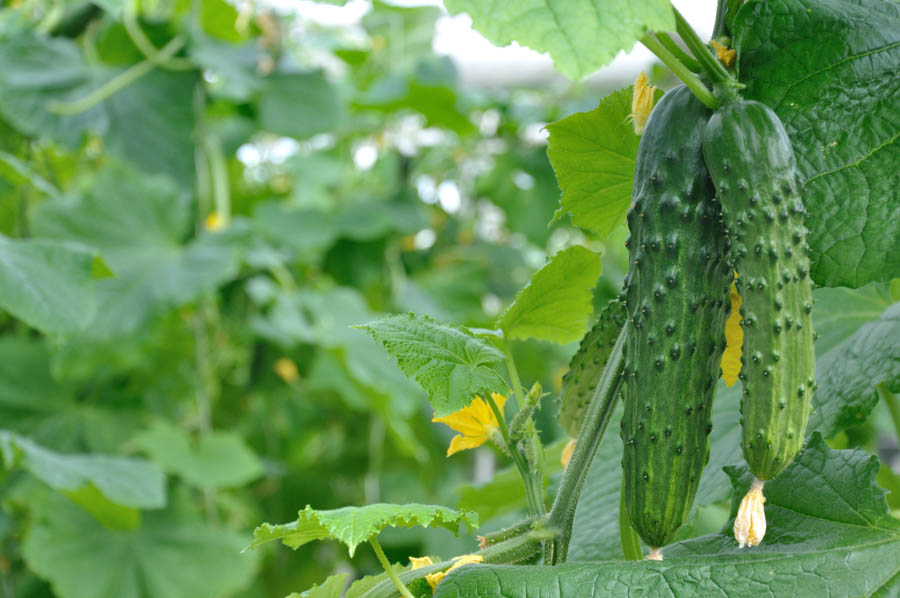Getting to Know Cucumbers Part 1 of 3: Two Basic Cucumber Decisions

Getting to Know Cucumbers for Garden and Kitchen
Part 1 of 3: Two Basic Cucumber Decisions: Slicers Versus Picklers, and Vining Versus Bush Types
How do you want to eat your cucumbers? The most basic decision about cucumbers for gardeners and cooks is culinary purpose. Slicing cucumbers or “slicers” are primarily eaten fresh; versus pickling cucumbers or “picklers” which are treated with vinegar, brine, and herbs before eating.
If a pickle is a cucumber with experience, as food writer Irena Chalmers has proposed, slicers are meant to be eaten fresh, raw, and inexperienced. Slicing cucumber varieties are bred to produce larger, straight fruits (which may need to be hung or trellised for optimal straightness when maturing), often 4 to 8 inches long at harvest but over 12 inches long for some types, and with smooth skins. They are, as it turns out, ideal for slicing, and produce uniform sections when cut both lengthwise and into circular slices.
Color options for slicers include many shades of green, also yellow, white, and combinations, mottling, or stippling of these. When fruits of green or white varieties reach the stage of turning yellow (as opposed to inherently yellow varieties like Lemon cucumber), this usually means that cucumbers are overripe and likely to be bitter, or that plants are severely stressed.
Typical slicing cucumbers
Picklers are bred to have dense flesh that will remain crunchy after brining and will hold up well when stored in liquid. Home-garden picklers are often curvy and variable in thickness from end to end, with rougher skin that may be covered with small spines or bumps, and 2 to 4 inches long at harvest. Commercial picklers are bred for uniformity, usually at small fruit size. When it comes to length of growing season, picklers are generally harvested earlier and smaller than slicers. Most picklers are green or shades of mottled/stippled green, often darker green at the stem and fading to lighter or mottled green at the blossom end.
Typical pickling cucumbers
Some cucumber varieties do well both as picklers when fruits are small or immature, and also as slicers if fruits are allowed to grow to full size. Technically any slicing cucumber can be pickled, and any pickling cucumber can be eaten fresh. Both slicers and picklers tend to be sweeter and less bitter when fruits are small and immature.
The 2nd basic cucumber decision for gardeners is between vining and bush cucumber types. Vining cucumbers produce larger plants and larger yields but need ample space. Bush types have been bred to produce smaller, compact plants that do well in small spaces and containers, but the tradeoff is a smaller overall yield. Vining and bush plant types are available that produce either slicer and pickler cucumber fruits.
Other articles in this series:
Part 2: Cucumber Characteristics and Terminology
Part 3: A Guide to Cucumber Types

